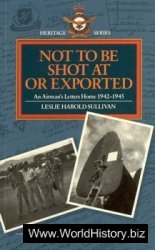The steadily increasing similarity between Byzantine and Turkish costume apparent by the 15th century, referred to under figure 55, is even more apparent in these 2 figures, pictorial sources clearly confirming that whilst traditional Byzantine dress may have been retained for court ceremony in Trebizond, Turkish costume and military equipment were by now predominant on the battlefield.
Figure 61, from frescoes in the church of Hagia Sophia in Trebizond, is one of the Byzantinised Laz or Tzans who constituted a substantial proportion of the Trapezuntine population and armed forces. Similarly dressed figures are to be found depicted in many different churches in the area, some of them portraying the usual military saints that in the Byzantine Empire are usually shown equipped like figures 49 and 50; however, in the Pontos region they are, significantly, mostly depicted unarmoured. His composite bow comes from the same source as figure 62, which portrays Trapezuntine cavalry turning in the saddle and firing backwards Parthian-style as shown here. Clavijo, describing the warband of a frontier nobleman, speaks of them as horsemen ‘armed with their bows and arrows’.
Figure 62 comes from a Florentine painted cassone of c. 1462 depicting the fall of Trebizond in 1461, almost certainly based on the descriptions of an eye-witness. The Trapezuntines and Ottomans shown in the original are virtually indistinguishable except for the fact that whereas the Turks all wear turbans, the Trapezuntines wear tall, mostly plumed hats of Georgian origin, of a type which Clavijo described in 1403 as tall, trimmed with miniver, with a gold cord running up the sides and a ‘great plume’ of crane feathers on top. One or
Two are also shown wearing hats like that of 55. Infantry and cavalry are all bearded and dressed alike in long, flowing topcoats, often heavily embroidered, over short tunics, close-fitting trousers and boots, of an unusual open-fronted design in the case of the infantry; note the high heels, such as Barbaro observed being worn in Georgia and Persia too. One foot-soldier is depicted with his coat tucked up into his waist-sash as described under figure 3, and it seems likely that the skirts of these long coats were split at the back anyway, like those of the neighbouring Georgians, since, as Barbaro observed, ‘otherwise they could not get on horseback’. No armour or helmets are to be seen anywhere on either side. Their weapons comprise a mixture of composite bow, curved sabre, spear and mace, with the bow and sabre predominating. Six of the 30-odd Trapezuntines in the original have shields, all of them infantrymen, of which all but one are of the shape depicted here. The exception is heater-shaped, other heater shields also being in evidence in frescoes.
Popular clothing colours in Trebizond at this date were scarlet and green. The cassone shows most colours being worn, while 61 wears a white cap (turban?), a black-belted, white-embroidered red coat over a yellow tunic, and yellow leather cavalry boots.




 World History
World History









